- Home
- Anne McCaffrey
Nimisha's Ship Page 7
Nimisha's Ship Read online
Page 7
“And infinite queries for you to answer for those of us who think we’ve contracted something lethal in our travels.”
“Precisely.” He put both hands on her shoulders, giving her a little shake and sternly eyeing her. “But, of course, I shall be only an emergency feature? You’ll be careful?”
“I always am,” Nimisha said, having no need to remind him that she had had only very minor scrapes in her career as a test pilot—nothing more than a sprain and bruises. As the saying went, any landing you walk away from is a good one. “Oh, how is Lord Vestrin progressing?”
Lord Naves’s expression became very solemn. “That young man feels the world owes him something. Which I assure you it doesn’t. His . . . ah . . . reconstruction is almost complete and indeed, there were some improvements he insisted on in the facial reconstruction. Symmetry is just not natural. It is, indeed, those minor flaws that give the whole countenance its character. Of course, character is a lack that body sculpting cannot repair. Nor can Lady Vescuya’s devotion to her son be considered an asset.” He paused, a fleeting look of dismay crossing his handsome and definitely asymmetrical features. “But she has been devoted.”
“So he’ll be more handsome than ever?”
Lord Naves gave her an odd look. “Illusory, of course,” he said, flicking his fingers to dismiss this topic of conversation. “Good luck, my dear,” and Lord Naves had given her four tenderly fond embraces. “At least the essence of me will be at your command. I feel much more confident about that.”
This shakedown flight was no more than routine, she thought, tearing off a chunk of the Mercassian bread and using it to sop up some of the salad dressing.
One second she was eating, the next, some subtle instinct had her on her feet and running to the bridge, swaying with the erratic motion of a ship gone unstable and yelling “Report!” at the top of her voice.
“Instruments indicate emergence of wormhole—”
“There isn’t a wormhole in this sector.”
“Ship’s library confirms wormhole phenomena . . .”
She caught sight of the boiling white pout of disturbance that could be nothing other than a wormhole plugging open the space directly in front of her.
“Helm to starboard! Hard!”
If they were lucky, they might just slip under the edge of the yawning maw that seemed to be sucking the ship in. From this angle, the hole looked far larger than it might actually be, for after all it wasn’t supposed to exist at these particular coordinates in Delta Quadrant. She’d chosen this area, off main shipping routes, so she could let out the Fiver’s engines without running any other vessel down. The seventy meters of her ship were no more than a splinter at its perimeter, yet she might just be able to skim past.
Fighting against the bucking of the deck beneath her feet, she pushed herself into the pilot’s chair, fingers flying to program and release a Mayday beacon, propelling it well astern of her ship. With her left arm, she fumbled into the safety harness but had no time to fasten the belt when the ship juddered and inexorably yawed to port, unable to execute the starboard maneuver though she could hear both thrusters and engines roaring to comply. The wormhole had got her and the ship was slipping over its thick lip and down into the brilliant, roiling interior of the tunnel it made. A tunnel to where? She clung to the right armrest, struggling to secure herself in the harness.
“We are in the wormhole, ma’am,” said the AI. “What procedures are recommended?”
Nimisha swallowed a totally inappropriate and useless expletive.
“Shut down the drive. Use thrusters to keep us as steady as possible, Helm,” she replied, firmly quelling the fright she could not quite suppress. To her immense chagrin, she realized that she had forgotten to program wormhole protocol. Now, in the incredible gullet of the hole, it was too late! Furthermore, she’d never been in one. Stable wormholes were relatively uncommon, and no one in their right mind entered one that hadn’t been thoroughly probed.
Was the passage through a hole supposed to be this rough? If Helm’s reflexes hadn’t been femtosecond fast, they’d be mashed against the sides, the hull scored if not penetrated by the protuberances that she saw more as retinal afterimages, they passed by so fast. Petralloy was considered the best possible material to clad spacecraft and she had used the most advanced composition for the Fiver, but it could be dented and scraped. She could lose the exterior modules and sensors. Was she being sucked into a one-way route to nowhere? Still attempting to fit the harness about her for whatever protection that would afford her, she leaned to port to get her right arm through the straps just as a savage downward plunge brought her forehead against the armrest with sufficient force to render her unconscious.
“Ma’am? Ma’am?” the calm voice of her pilot asked, “your vital signs are showing distress. You should report immediately to the infirmary.” When there was no reply, the advice was repeated with an additional query: “Orders are required. No preprogrammed orders conform to the current emergency. Orders are requested. Ma’am?” Then, as the wormhole spat them out into starlit space, Helm added, “Without formal orders, will comply with standard operating procedures.”
III
THE PULSES from the Mayday beacon were omnidirectional and would connect with any sensor capable of receiving the message, including planetary or lunar satellites or other spaceships.
The first comunit to catch it was on a small intersystem freighter, five light-hours away.
“Hey, Cap’n,” the sailor on watch yelled to the dozing master of the vessel, “distress call.”
“Where?”
When the sailor told him, the captain snorted. “Like we could do anything about it this month.”
“It’s got a Navy tag and one from the Rondymense Ship Yard down Vega way. We gotta at least forward it.”
“Rondymense?” The captain struggled to a sitting position. “And Navy? Label it ‘Flash Override.’ We can’t get there, but we can sure pulse a tight beam to the nearest Naval Base. Look up the coordinates and the frequency.”
The nearest naval unit, a destroyer on a routine mission, caught another of the pulses and the two warnings reached the Naval Base at Dalonaga.
“Send those coordinates to the plot,” the officer of the watch said, wasting no time to get to the transparent three-dimensional sphere that was used during maneuvers. The sphere could be adjusted to any given area of space and display it three-dimensionally. It also pinpointed the present position of every naval unit in that area. Of which there were currently none when the appropriate section appeared on the sector and with it the position of the buoy, a tiny blinking red asterisk.
“The gods wept!” cried the jig. “We had a routine signal about a trial run for a Rondymense yacht out that way. What could have happened? I’ll have to bother the captain with this.”
“I’d’ve killed you if you hadn’t,” was the response as the captain swung onto the bridge, his cheek bearing crease marks from his interrupted sleep. “Crappit! The ID’s for that long-distance yacht Vegan Fleet’s keen on. Now what the frag could have happened to it? What have we got that’s fast enough to get out there and see, Addison?” he asked the duty officer.
“Sir, there’s nothing close enough, sir,” Addison replied, depressed. Then he brightened as he added, “The base at Coyne III has one of the Mark Twos that came out of the Rondymense Yard.”
“Send a Flash Override to Coyne III’s base commander, requiring him to send the Mark Two with all possible speed to these coordinates.” The captain’s finger was shaking just a little as he tapped the plot and the winking light. “The Mark Two can be Net Control and do a standard search pattern until we can get more units out there to help. No one’s going to hang about when they see who sent that Mayday.”
Rubbing his face as if that would assist clearer insight into the emergency, the captain increased the magnification of the targeted zone and began to scratch his skull in perplexity. It was a sparsely occupied
area, which is why it was used for testing new ships, and occasionally for naval maneuvers. Could the Rondymense ship have blundered into a missile left over from the last Games? He shook his head at that unlikelihood. If the test ship were an advance on the design of the Mark 2, it would have sensors capable of detecting a missile. After all, the pilot had had time to shoot off a Mayday beacon, so he hadn’t landed on the missile to set it off. For which mischance the odds would be in gigabytes.
The Mark 2 from Coyne III was the first to arrive, its captain having had the distinct pleasure of an excuse to redline the engines. It was joined by half a dozen other vessels, four naval, one commercial, and one luxury yacht that had altered course from a hunting preserve to answer what might be a much more exciting adventure for its First Family occupants. All participated in the standard 3-D search pattern, with the Mark 2, Swallow, acting as NETCOS.
The Swallow, commanded by a senior lieutenant on his first assignment, had followed all the recommended search procedures, starting with a long-range scan for a life pod, for debris, for traces of an ion trail. He did find that. Or, rather, traces of the ship’s reentry into normal space.
The emissions were clean enough, what one would expect of a brand-new ship. But there wasn’t so much as a cinder of debris or a pellet of melted metal to be found. Hailed by the incoming naval ships, one with an admiral aboard, Swallow handed over the NETCOS to the flagship while he continued on his search pattern. By now all the ships had moved well beyond the beacon. The one thing he should have tried to find was any discontinuity in the space near the beacon, but at that point in time no one had thought to check for a wormhole.
Fretting during the long sleepless days it took Caleb Rustin to reach the beacon, even redlining the Mark 4 he “borrowed” from the Rondymense Ship Yard, he had time to check for reports on any anomalies, of any kind, reported in that sector of space.
He groaned as the report divulged that eighteen ships had been reported “last heard from” in this general area. The latest one had been fifteen standard years previously, an exploration ship, the Poolbeg, FSPS 9K66E, ten aboard, Captain Panados Querine commanding. The ship and crew had been deemed officially lost in space seven years ago. The other ships listed as missing ranged back through the nearly two hundred and fifty years of space history. No debris of any of the missing ships had ever been found, even at the Moon Base of the notorious Ebevyr Pirates who had terrorized commercial shipping for three decades over a hundred years before. However, many previously “missing” ships, or fragments thereof, including descendants of crews and passengers reduced to slavery by the pirates, were found and accounted for.
When Caleb reported his findings to Admiral Gollanch on his flagship, the admiral immediately set the more powerful search units of his database to sift possibilities.
“Wormhole?” Caleb suggested, wincing.
The admiral looked pensive. “None ever reported at those coordinates, Rustin”
“Possibly why this particular area is one of the more deserted sectors?”
“Having eaten any nearby stars and their planets?” If an Admiral chose to be facetious, he could, but Caleb gritted his teeth. It was Nimisha Boynton-Rondymense who was the victim, not some totally unknown unfortunate. “What the astrographer says about wormholes is that they seem to appear in less tenanted space. The few that have been regular occurrences suggest that there are far more of these phenomena than we have documented.”
“If Lady Nimisha had seen a wormhole, she’d’ve included it in the Mayday,” Caleb said staunchly.
“If she had seen it in time, Commander,” the admiral said. “I seem to be arguing against my wishes,” he added with a rueful twist to his lips. “I’d like nothing better than to find her . . . and that prototype. Did you redline the Four all the way out there?”
“Yes, sir,” Caleb replied without a trace of regret. “Drive and ship performed very well at maximum thrust.”
“No problems?”
“I’m preparing a full performance report, sir. You’ll have it shortly on a pulsed beam.”
“Did well, did it? Then why in name of Holy Icons was Nimisha dissatisfied with the Four?”
“Lady Nimisha . . .” Caleb had to close his eyes a moment, having managed to keep desire under control. By mentioning her name, he was robbed of his calm for a second, but he continued with a firm emphasis on the verb, “is a perfectionist, and I must admit that she had already proved to me that the Fiver’s drive tested out 12.25 percent more efficient before and after installation.”
“Hmmm, really?” The admiral pulled at his lower lip. “Then we shall spare no effort to retrieve the prodigal and her efficient vessel.”
“Especially as she made the final adjustments and additions with Hiska’s help and not mine,” Caleb said ruefully.
By the time Caleb Rustin arrived at the beacon, the Swallow and the other vessels that had answered the Mayday were widening their search pattern for debris or any other traces. It was now three days and fifteen hours since the beacon had first begun to pulse. Admiral Gollanch had sent on to Caleb in his faster comsystem science reports on wormhole tracings, but whatever might have been present before the Mark 2 had begun its search pattern had been overlaid by its own ion trail.
The Swallow’s captain was horrified speechless and then babbled on and on about how he had followed standard search procedures as outlined in regulations and . . . until Caleb had to cut off the sound and look away from the screen. He got his emotions under control and held up one hand to stem the flow from the penitent junior before he flipped back on the sound.
“You did exactly as you should, Fermassy, no fault to you,” Caleb said, and had to repeat it several more times until the young captain could be sufficiently reassured.
“What can we do now, Commander? We must do something,” Fermassy insisted. “Lady Nimisha must be found! She’s First Family, sir!”
“We are all exceedingly aware of that, Fermassy, I assure you. It is my devout hope that the more sensitive equipment on board Admiral Gollanch’s ship may find traces we cannot.”
“But both our ships are Rondymense-made, sir!” the young captain exclaimed.
“Which is why we made it here so fast. Ah, and what have we coming in now?” Caleb noticed ships arriving from three directions and welcomed the diversion from Fermassy’s self-castigation.
He was not quite as pleased to discover that the luxury yacht that had diverted from its original destination to a hunting preserve was occupied by friends of Lord Vestrin. How the man would enjoy knowing that his half-sister had gone missing in such a dramatic fashion. Caleb sent a pulsed priority message directly to Rondymense Ship Yard and another to Lady Rezalla. Vestrin’s dam would like nothing better than to get the Yard back into her hands under a default condition, since the Yard had been left to Nimisha, not to Nimisha and her body-heir.
But Nimisha is not dead, Caleb told himself at the top of his mental voice, denying, denying, denying.
There had been the Fiver’s ion trail in normal space, ending some ten thousand kilometers from the beacon. Caleb figured she might well have propelled it as far from the wormhole as possible to be sure it would escape and send its vital Mayday. She was in the most advanced and sophisticated ship in the known galaxy, built of the best materials, all basic ship functions had proved out in the earlier models, and no debris was evident. Malfunction was marginally possible. But he denied malfunction. He denied her death. But how could they find a wormhole that had never been seen? How could they even prove that it had been a wormhole that had snatched her out of this part of space?
Despite the most sensitive and sophisticated of instruments, some of which bore Nimisha Boynton-Rondymense’s patent registrations, no further trace was found. Machinists and programmers on the admiral’s big cruiser made alterations to existing sensors and the original beacon was shortly anchored to a highly specialized satellite. It was programmed to launch a piggyback double probe into whatev
er wormhole or other spatial anomaly might appear at these coordinates, simultaneously pulsing a broadcast to the nearest drone monitor. When the double probe reached the other end of the wormhole, the piggyback, with the most powerful single thruster in the Fleet’s possession, would be immediately released and return with whatever information it could glean in a nanosecond’s view of the exit space. Similar units would be constructed and scattered within this relatively unoccupied sector, so that no wormhole could poke its white snout through the fabric of space without instant detection. During the next month, a special station was hauled to the edge of the sector and positioned there, with a Mark 4 on detached assignment, probably the fastest ship that could be scrambled to reach a wormhole.
“We hope,” was Admiral Gollanch’s remark as he initialed the necessary orders. “I’ll make this a three-month duty station, high-risk compensation, partnered crews so they’ll have something to do while they wait . . .”
“Ma’am? Ma’am?”
“Lady Nimisha? Please answer, Lady Nimisha. Do you wish more to eat?”
“Nimi, get to your feet and get over to the unit. I can’t treat you from here.”
The sentences, each in a different but recognizable tone from patient repetition to anxiety to command, gradually penetrated Nimi’s fogged mind.
She struggled to sit up, rolling her eyes at the pain in her head, trying to remember what had hit her.
“Orders, please, ma’am. I am on standby.”
“Standby?” Nimi repeated and forced her eyes open, one hand at her temple so that she felt the dried blood that had congealed there. “Oh.” She shed the half of harness she had managed to get on and tried to stand. “Helm, report!”

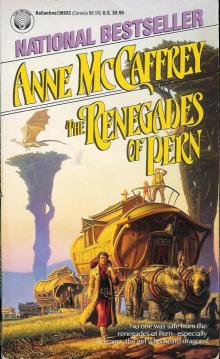 The Renegades of Pern (dragon riders of pern)
The Renegades of Pern (dragon riders of pern)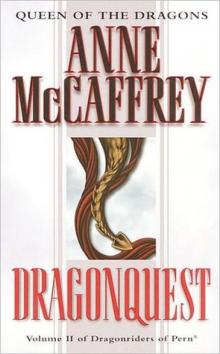 Dragonquest
Dragonquest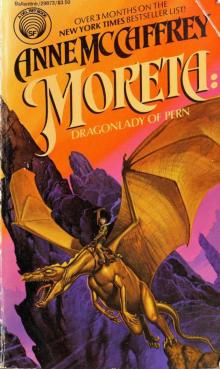 Moreta (Dragonlady of Pern)
Moreta (Dragonlady of Pern) The Masterharper of Pern
The Masterharper of Pern If Wishes Were Horses
If Wishes Were Horses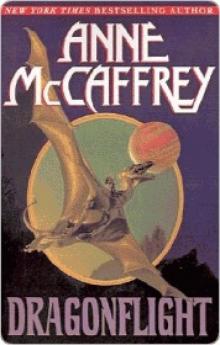 Dragonflight
Dragonflight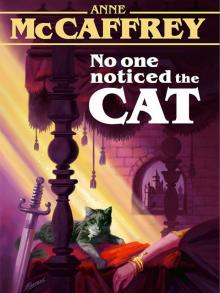 No One Noticed the Cat
No One Noticed the Cat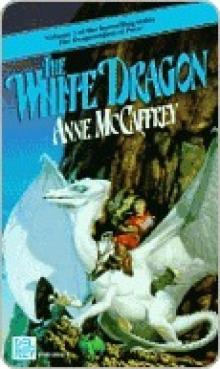 The White Dragon
The White Dragon A Gift of Dragons
A Gift of Dragons Harper Hall - Dragonsong
Harper Hall - Dragonsong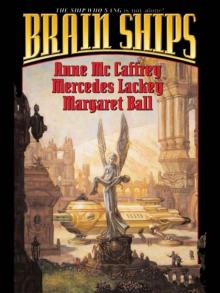 Brain Ships
Brain Ships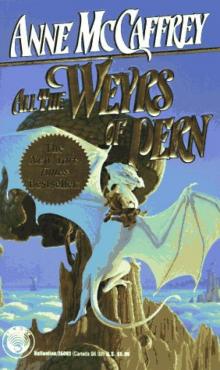 All The Weyrs of Pern
All The Weyrs of Pern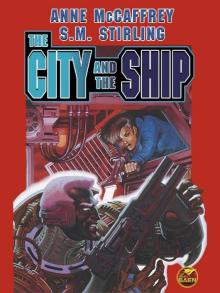 The City and the Ship
The City and the Ship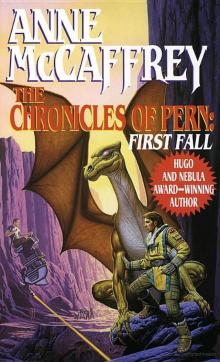 The Chronicles of Pern: First Fall
The Chronicles of Pern: First Fall Acorna’s Search
Acorna’s Search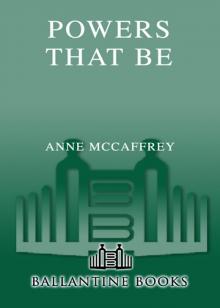 Powers That Be
Powers That Be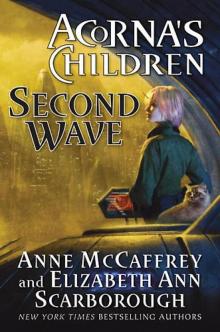 Second Wave
Second Wave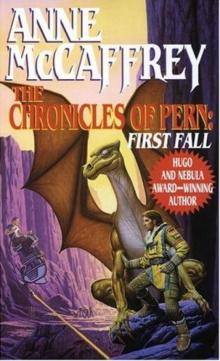 Chronicles of Pern (First Fall)
Chronicles of Pern (First Fall) The Kilternan Legacy
The Kilternan Legacy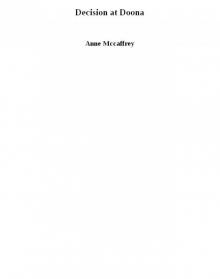 Decision at Doona
Decision at Doona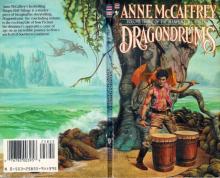 Dragondrums (dragon riders of pern)
Dragondrums (dragon riders of pern)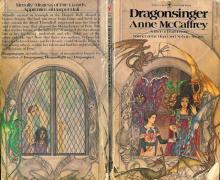 Dragonsinger (dragon riders of pern)
Dragonsinger (dragon riders of pern)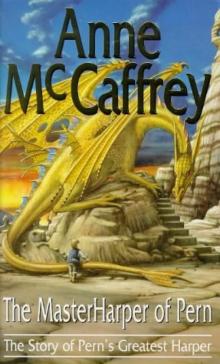 The Master Harper of Pern
The Master Harper of Pern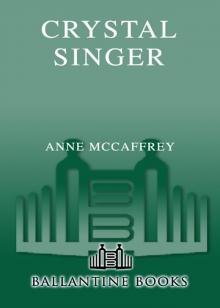 Crystal Singer
Crystal Singer Acorna’s People
Acorna’s People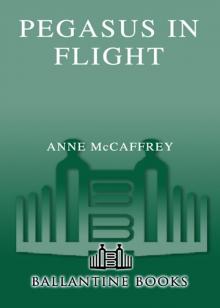 Pegasus in Flight
Pegasus in Flight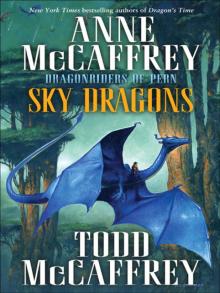 Sky Dragons Dragonriders of Pern
Sky Dragons Dragonriders of Pern Dragonriders of Pern 4 - Dragonsinger
Dragonriders of Pern 4 - Dragonsinger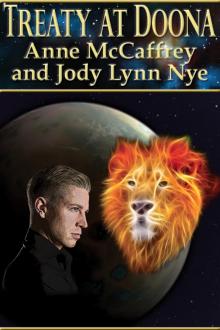 Treaty at Doona
Treaty at Doona Damia's Children
Damia's Children Stitch In Snow
Stitch In Snow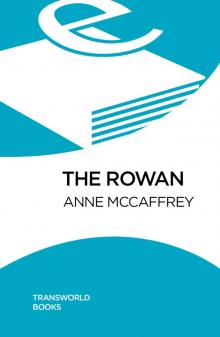 The Rowan
The Rowan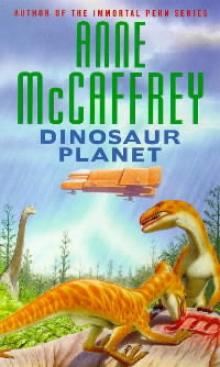 Dinosaur Planet
Dinosaur Planet The Year of the Lucy
The Year of the Lucy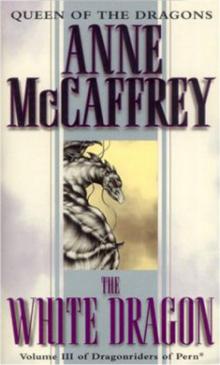 The White Dragon p-4
The White Dragon p-4 Power Lines
Power Lines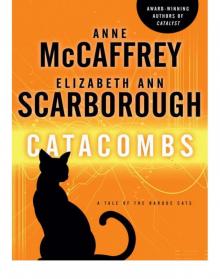 Catacombs
Catacombs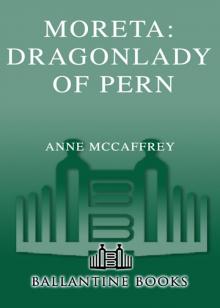 Moreta
Moreta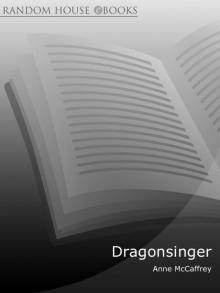 Dragonsinger
Dragonsinger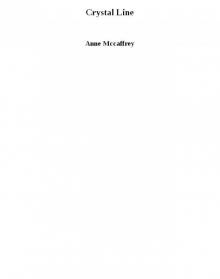 Crystal Line
Crystal Line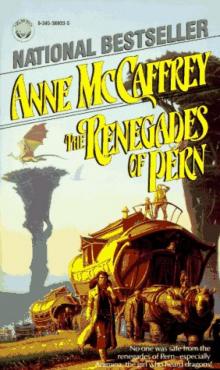 The Renegades of Pern
The Renegades of Pern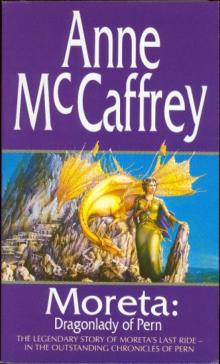 Moreta - Dragonlady of Pern p-8
Moreta - Dragonlady of Pern p-8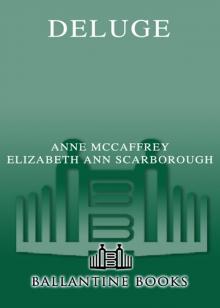 Deluge
Deluge The Skies of Pern
The Skies of Pern Acorna's Quest
Acorna's Quest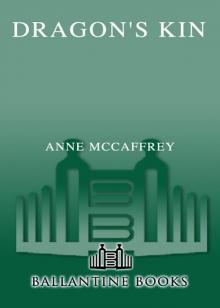 Dragon's Kin
Dragon's Kin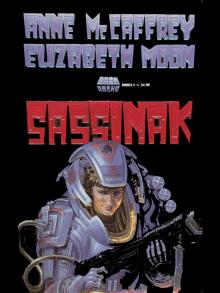 Sassinak
Sassinak![Crystal Universe - [Crystal Singer 03] - Crystal Line Read online](http://i1.bookreadfree.com/i1/03/31/crystal_universe_-_crystal_singer_03_-_crystal_line_preview.jpg) Crystal Universe - [Crystal Singer 03] - Crystal Line
Crystal Universe - [Crystal Singer 03] - Crystal Line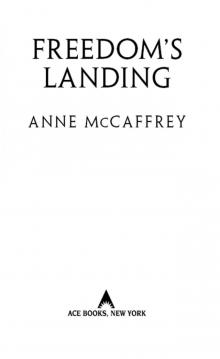 Freedom's Landing
Freedom's Landing Acorna’s Quest
Acorna’s Quest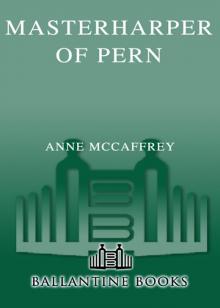 Masterharper of Pern
Masterharper of Pern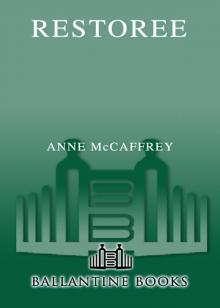 Restoree
Restoree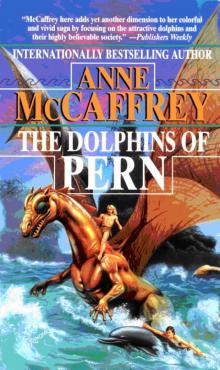 Dolphins of Pern
Dolphins of Pern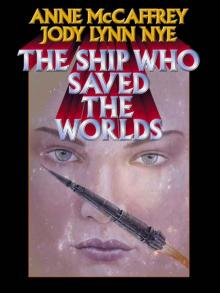 The Ship Who Saved the Worlds
The Ship Who Saved the Worlds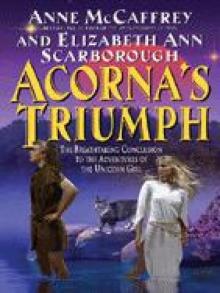 Acorna's Triumph
Acorna's Triumph Acorna's Rebels
Acorna's Rebels![[Acorna 08] - First Warning: Acorna's Children (with Elizabeth Ann Scarborough) Read online](http://i1.bookreadfree.com/i1/04/06/acorna_08_-_first_warning_acornas_children_with_elizabeth_ann_scarborough_preview.jpg) [Acorna 08] - First Warning: Acorna's Children (with Elizabeth Ann Scarborough)
[Acorna 08] - First Warning: Acorna's Children (with Elizabeth Ann Scarborough)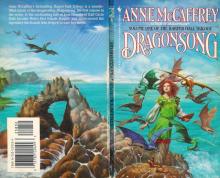 Dragonsong (dragon riders of pern)
Dragonsong (dragon riders of pern) Dragonriders of Pern 6 - Dragondrums
Dragonriders of Pern 6 - Dragondrums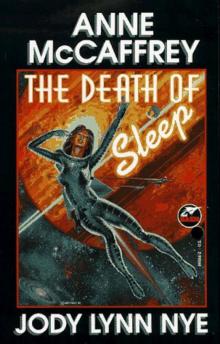 The Death of Sleep
The Death of Sleep Crisis On Doona
Crisis On Doona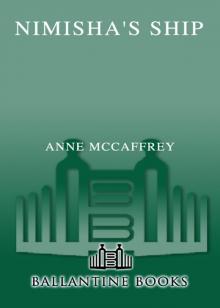 Nimisha's Ship
Nimisha's Ship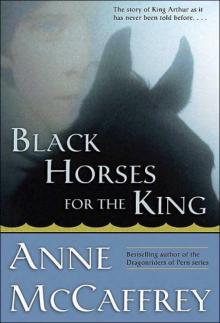 Black Horses for the King
Black Horses for the King Changelings
Changelings Freedom's Choice
Freedom's Choice The Lady
The Lady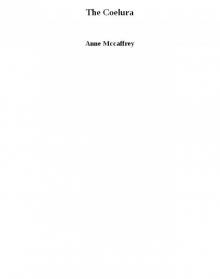 The Coelura
The Coelura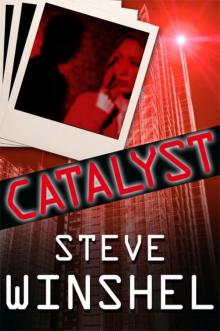 Catalyst
Catalyst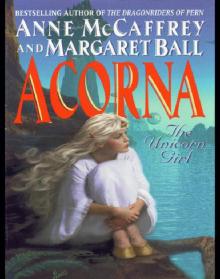 The Unicorn Girl
The Unicorn Girl Freedom's Ransom
Freedom's Ransom Nerilka's Story
Nerilka's Story Dragon's Fire
Dragon's Fire Generation Warriors
Generation Warriors Lyon's Pride
Lyon's Pride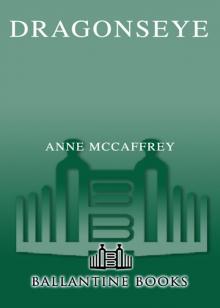 Dragonseye
Dragonseye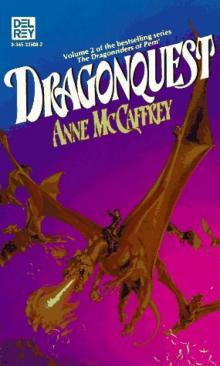 Dragon Quest
Dragon Quest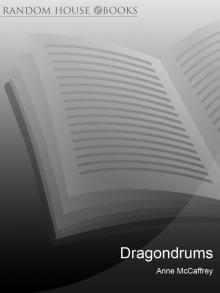 Dragondrums
Dragondrums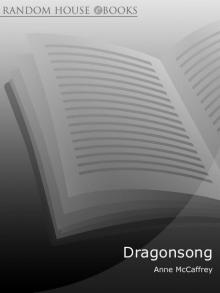 Dragonsong
Dragonsong The Mystery of Ireta
The Mystery of Ireta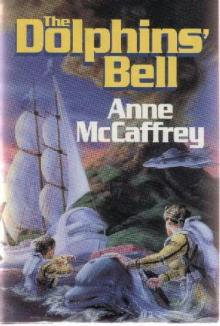 Dolphins' Bell
Dolphins' Bell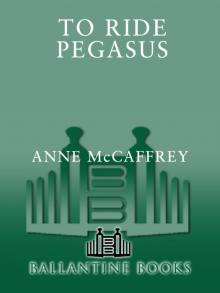 To Ride Pegasus
To Ride Pegasus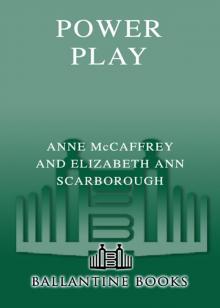 Power Play
Power Play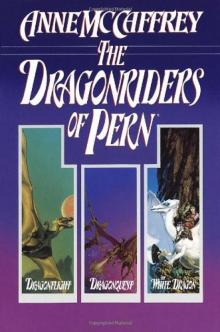 The Dragonriders of Pern
The Dragonriders of Pern An Exchange of Gifts
An Exchange of Gifts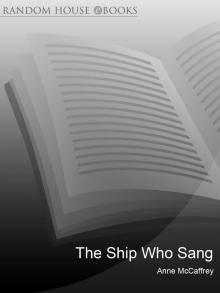 The Ship Who Sang
The Ship Who Sang Sky Dragons: Dragonriders of Pern
Sky Dragons: Dragonriders of Pern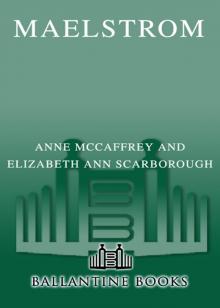 Maelstrom
Maelstrom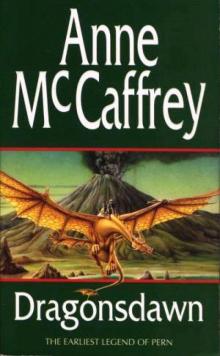 Dragons Dawn
Dragons Dawn Dragon Song
Dragon Song The Ship Who Searched b-3
The Ship Who Searched b-3 Damia
Damia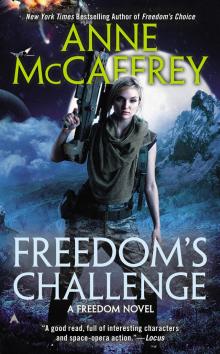 Freedom's Challenge
Freedom's Challenge